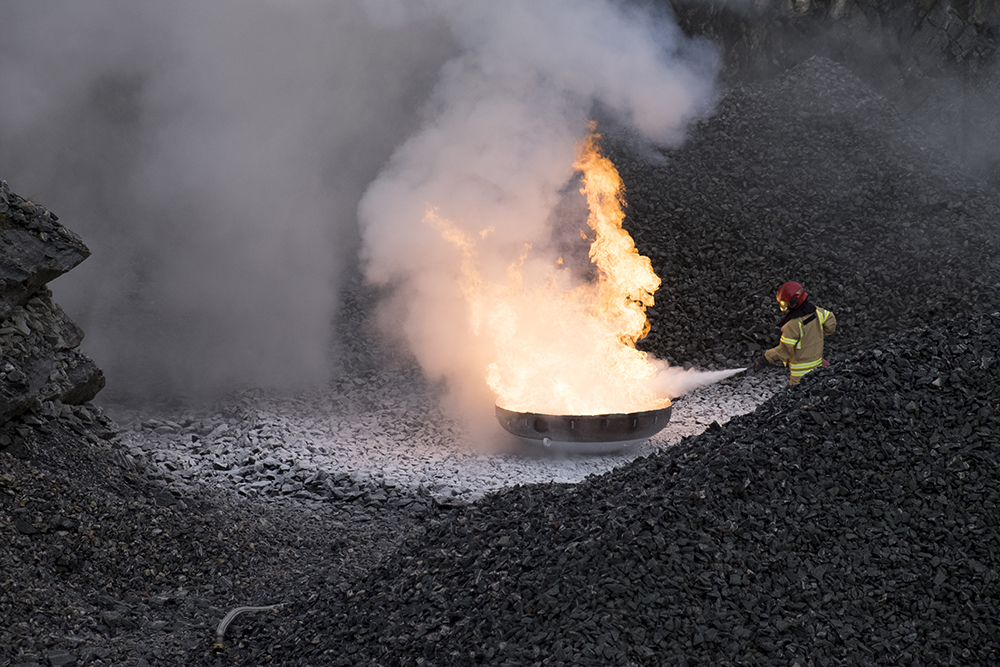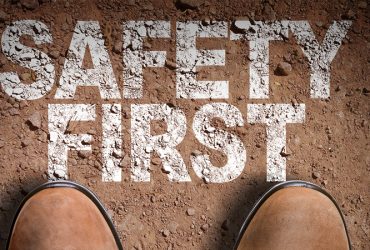Preparedness on the agenda
Emergency preparedness exercises are crucial when handling gas to ensure that those who work with gas on a daily basis remain safe, as well as others that may be affected. It’s all about accident prevention and harm reduction.
When handling potential hazardous substances like gas, you should know what to do in the case of an accident. “We manufacture and distribute different gases, and it is absolutely crucial to always be prepared for emergencies when you’re handling gas every day,” says Jan Einar Gjerde, factory manager at AGA in Tjeldbergodden, which rolls out tankers filled with gas daily throughout the year.
Accident simulation with tanker
«Worst case»-scenario involving a collision between a tanker and a passenger car, children who have to be evacuated from school and day care, as well as other injured individuals. The preparedness exercise organised by AGA was quite a sight. “We gave emergency services a very realistic scenario,” says initiator Gjerde, and continues: “Fire-fighters, ambulance personnel, police, and roadside assistance were on site and no-one knew what kind of gas was in the tanker. In such cases, it is important to contact the gas supplier for information so that you can handle the situation properly.”
It is important to practice for the unexpected
Preparedness is still on the political agenda, especially after tragic events. However, it is not always enough to simply have written plans and processes when the accident occurs. In crisis situations one often has to improvise and make quick and correct decisions, so it is important to have practical and realistic exercises. If preparedness is not second nature for those that need to help, unnecessary losses of life may occur. “We practice anything that should not happen,” says the security adviser of AGA, Kai Arne Trollerud. “When the accident happens, it’s important that the first responders on the scene of the accident know exactly what to do. It may be a matter of minutes – maybe seconds”, says Trollerud.
Trollerud is a former fire-fighter and emphasises the importance of conducting such exercises:
“Plans for preparedness are only as strong as their weakest link. The fire service is good at handling most “normal” accidents. An accident with gas, on the other hand, is something quite different from a normal accident, and you rarely or never get the chance to practice it. So it is very valuable to attend such an exercise”, he says.
Exercise on extinguishing burning gases
“Gas is no laughing matter. For example, many people think that oxygen is completely harmless, but oxygen enriches combustion. Hence, it is important that the emergency services are allowed to practice extinguishing fires with different gases. Then they will see how fighting fire with water, CO2, and powder, respectively, works. In practice, you have to understand how it works,” Trollerud concludes.
What is emergency preparedness?
Preparedness comes from “being prepared”, referring to being prepared for a situation. Preparedness exercises are done to prevent accidents or limit the consequences of an accident, and to protect personnel, materials and valuables. The exercise includes technical, operational, and organisational measures planned to be implemented an emergency response organisation. Preparedness exercises are carried out by both emergency services, public institutions and private companies. A starting point for an exercise is written plans with roles, responsibilities and reporting obligations clearly defined. The purpose of an exercise is the ensure that personnel who may be involved in handling a real emergency know what to do, who to inform, know the routines, and thus are able to handle the situation in the best way possible.
Text: Ingalill Sandal & Unni Bekkevold
Video & photo: HD Studio AS




